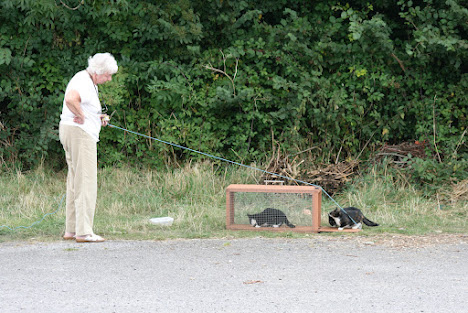Rolling is what we do when we are happy and relaxed. So humans think. And that's where they are wrong. Rolling has different meanings.
This kind of roll, done by my friend Boomer, is just a happy relaxed roll in front of his human. It means something like "Look at me! I'm your friend." It does not mean "Tickle my tummy."
If an ignorant human thinks its safe to tickle Boomer's tummy, he will soon be put right. Because rolling then raking with his painful claws is also what Boomer does to toy mice - as a kind of play-with-prey game. Human beware!
Rolling, or rather lying on the side of the body, is also something cats do in a play fight - or in a real fight. So itl's not straight-forward.
A roll might also be a roll in the dust to thicken the coat or change our smell. It might be a sort of floppy roll to expose our tummy to the sun.
Humans need to attend very carefully to what we do, how we do it, whether we look relaxed, playful or even fearful. They need to consider the context not just one single action.
So a roll is either relaxation with attention-seeking, a play-with-prey (human fingers too) move, a move in a play fight, a defensive move in a real fight, or just a chance to roll in the dust or in the sunlight.
Humans, don't make assumptions.








